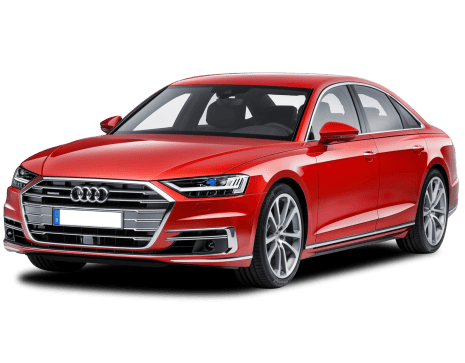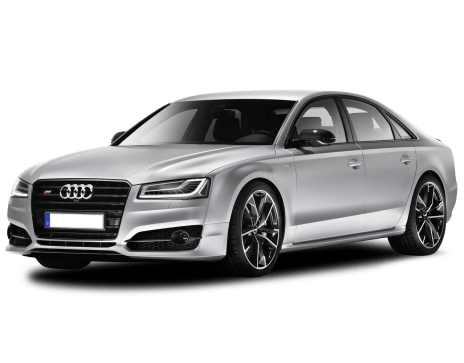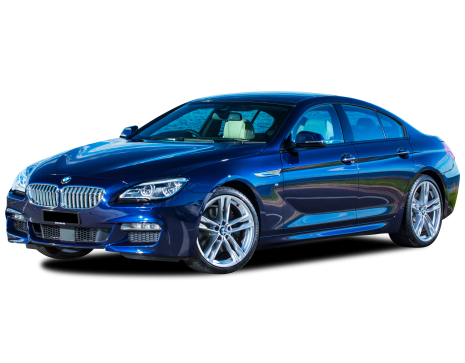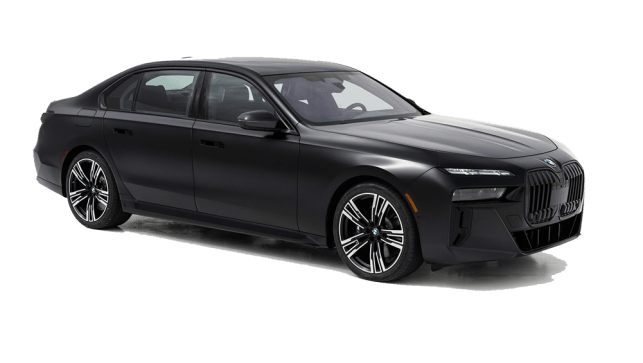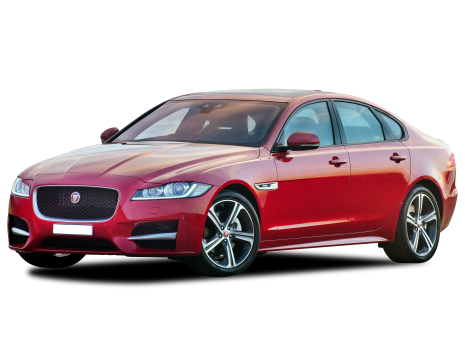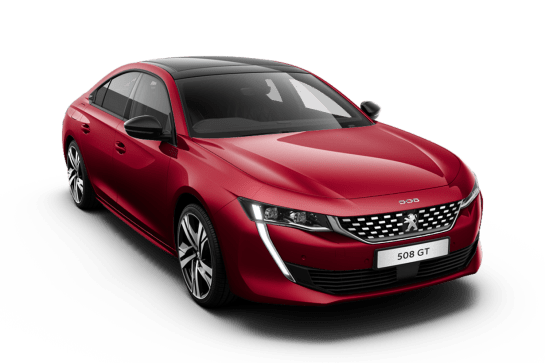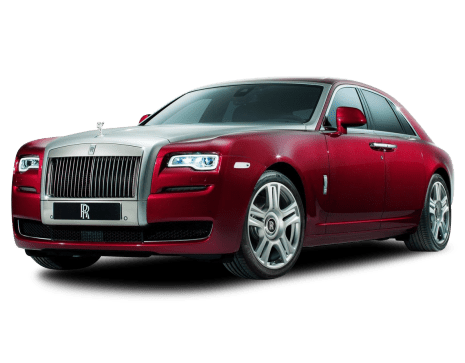
Alfa Romeo Giulia VS Mercedes-Benz A35
Alfa Romeo Giulia
Likes
- It’s not German
- Improved in-cabin feel
- Better value than before
Dislikes
- Fiddly multimedia software
- Limited in-cabin storage solutions
- Only three-year warranty
Mercedes-Benz A35
Likes
- Sleek design
- Fun to drive
- Excellent warranty
Dislikes
- Media glitches
- Back seat is tight
- Terrible road noise
Summary
Alfa Romeo Giulia
Alfa Romeo was poised to rock the established mid-size luxury sedan segment back in 2017 when it launched the Giulia, firing a direct salvo at the big Germans.
Combining drop-dead gorgeous looks with peppy performance was the name of the game for the Giulia, but after arriving with much hype and fanfare, Alfa Romeo doesn’t seem to have conquested as many sales as they had originally hoped.
So far this year, Alfa Romeo has sold just 142 Giulias, well behind the segment leading Mercedes C-Class, BMW 3 Series and Audi A4, but a new mid-life update hopes to revitalise interest in the Italian sedan.
The refreshed line-up brings in more standard equipment and sharper pricing, but has Alfa done enough to sway you out of a tried and trusted German sports sedan?
| Safety rating | |
|---|---|
| Engine Type | 2.9L turbo |
| Fuel Type | Premium Unleaded Petrol |
| Fuel Efficiency | 8.2L/100km |
| Seating | 5 seats |
Mercedes-Benz A35
If you want a Mercedes-AMG A45 sedan, you’re dead out of luck - there isn’t going to be one. Your alternatives are the sleeker, more style-focused CLA 45 four-door ‘coupe’, or the A45 hatch, which is more often associated with boy racer types… with deep pockets.
Or you could buy this car - the Mercedes-AMG A35 4Matic sedan. A lot of pundits have questioned the two-prong AMG strategy in the hatchback range, with the A35 slotting between the already-pretty-hot A250 4Matic and A45 S.
In the sedan line-up, however, there’s a different approach, with the Mercedes-AMG A35 4Matic topping the range. So is it a fitting flagship for the small sedan line-up? It certainly has the tech, safety and equipment levels to live up to buyers’ expectations.
And as a rival to the likes of the Audi S3 sedan, BMW 2 Series Gran Coupe and its own sibling, the Mercedes-AMG CLA35, does it offer a compelling alternative?
Let’s go through it, criteria by criteria.
| Safety rating | |
|---|---|
| Engine Type | 2.0L turbo |
| Fuel Type | Premium Unleaded Petrol |
| Fuel Efficiency | 7.6L/100km |
| Seating | 5 seats |
Verdict
Alfa Romeo Giulia7.9/10
This is the Giulia Alfa Romeo should have launched back in 2017.
Especially stacked up against its German rivals, the new Giulia is not only more attractive to the eye, but also the hip pocket.
The boost in standard equipment and safety gear is a huge boon for potential Alfa buyers, while no compromises are found in the Giulia’s fun-to-drive nature and peppy engine.
Its weakest aspect might be its average three-year warranty, but if you are looking for a new premium mid-size sedan that stands out from the crowd without any major concessions, the Giulia should be on your watch list.
Mercedes-Benz A358/10
The Mercedes-AMG A35 sedan is a genuinely fun small car. To me it’s a more mature offering than the A35 hatch, while not being quite as pretentious as a CLA35. Therefore I like it on principle.
Would I personally choose it over an Audi S3? Probably not - but there are plenty of objective reasons why you would.
Design
Alfa Romeo Giulia9/10
Park a brand-new 2020 Giulia next to its predecessor, and you’ll find they look identical from the outside.
It would be a bit unfair to call this update a ‘facelift’, but we’re glad Alfa Romeo hasn’t messed with the sharp styling of its Giulia sedan.
Having been on sale in Australia since early 2017, the Giulia doesn’t look like it has aged a day. In fact, we reckon it has gotten a bit better with age, especially in its top-spec Quadrifoglio trim.
With a triangular front grille and the number plate offset to side, the Giulia looks unique relative to anything else on the road, and we appreciate its distinctive styling.
The angular headlights also add to the Giulia’s aggressive and sporty stance, even in its base Sport trim, while the 19-inch wheels help fill the arches and give a sense of a more expensive car.
The handsome look continues to the rear, with the sculpted derriere looking taught and tight like a well-tailored pair of suit pants rather than some ill-fitting, off-the-shelf trousers.
However, we will point out the black plastic on the underside of the bumper on our base Giulia Sport, which looks a tad cheap with only a single exhaust outlet on the left, and a sea of… nothing.
Stepping up to the more expensive (and more potent) Veloce or Quadrifoglio remedies this however, with a proper diffuser and dual and quad outlets respectively.
The Giulia certainly stands out amongst the sea of Mercedes, BMW and Audi models in the executive sedan segment, and proves that doing your own thing can be hugely satisfying.
Combine the stylish exterior with more colour options – like the new 'Visconti Green' – and you can really make your Giulia pop, though we do wish our test car was finished in a more exciting hue.
With this Vesuvio Grey option, the Giulia blends in a bit too closely to the greys, blacks, whites and silvers you usually see on premium mid-size sedans, but all colours aside from white and red attract a $1355 premium.
Inside, much of the interior carries over as before, but Alfa Romeo has moved things a little more upmarket thanks to a few small touches that add up to a big difference.
The centre console area, while not being redesigned, has been given more of a premium makeover thanks to a carbon-fibre-like trim with aluminium and gloss-black highlights.
The shifter, especially, feels great thanks to the dimpled leather design, while other touch points such as the multimedia control, drive select and volume knobs also deliver a weightier, more substantial sensation.
Aside from that, the Giulia retains its premium cabin materials, soft-touch multi-function leather steering wheel and mixed material finish for an elegant and sophisticated interior worthy of a premium European model.
Our test car was kitted out with the standard black interior, but more adventurous buyers can opt for tan or red – the latter of which would definitely be our pick.
Mercedes-Benz A358/10
This is the first AMG A-Class sedan ever, so that’s an interesting design decision. I wasn’t sure whether Mercedes needed a CLA ‘Coupe’ and an A-Class sedan to sit alongside one another, but there are distinct differences in terms of the look and intent of the two compact models.
The A sedan carries over the A-Class hatchback’s aggressive styling, with sharp, angular headlights, a strong presence courtesy of its black exterior highlights (including AMG flics on the front bumper and black side skirts, rear spoiler and rear diffuser for this test vehicle). The black 19-inch black-finish rims fitted to our test car are also optional, with silver being the standard finish.
It has a stumpy little boot with a broad stance thanks to its triangulated tail-lights and horizontal reflectors, while the twin exhaust pipes with black tips are rather pleasant to look at, too.
It’s a very attractive sedan, with nothing clumsy about its proportions at all. Is it gorgeous enough to make you think twice about the Audi A3/S3/RS3 as the ruler of the pretty little sedan? Maybe… it’s not quite there for me, although it’s close. But it is certainly a distinct design, one that Merc fans will undoubtedly adore.
The dimensions of the A35 sedan aren’t what a lot of people would actually consider “small”. It’s 4549mm long (on a 2729mm wheelbase), 1796mm wide and 1446mm tall. For context, that’s longer, wider and taller than the substantial Mazda3 small sedan, if not quite as big as the a Corolla sedan.
And if you’re wondering about how that compares to a CLA, that car has the same wheelbase but is 4688mm long, 1830mm wide and 1439mm tall. That’s bigger than a C-Class. Gosh, how confusing.
What does it all mean when it comes to interior space? Check out the interior images and details below to see for yourself.
Practicality
Alfa Romeo Giulia7/10
Measuring 4643mm long, 1860mm wide, 1436mm tall, and with a 2820mm wheelbase, the Giulia offers plenty of room for passengers, front and rear.
The sports front seats are an especially pleasant place to be; tight-hugging, well-bolstered and super supportive, meaning no fatigue even after extended driving trips.
Storage solutions though, are somewhat limited.
The door pockets won’t accommodate a bottle of any size thanks to the armrest design, while the two centre cupholders are positioned as such that a bottle will block climate controls.
A generous storage cubby can be found under the centre armrest though, and the wireless charger design lays your device almost vertically in a separate compartment so you won’t scratch your screen.
Glove box size is standard, but the owner’s manual does eat into room a little, while driver’s also have access to another small cubby to the right of the steering wheel.
At least Alfa now includes a handy key fob holder to the left of the shifter? Though this feature becomes redundant with keyless entry and push-button start meaning you more likely just to leave the keys in your pocket.
The rear seats offer plenty of head-, leg- and shoulder-space for passengers in the outboard seats, even when the front seat is set to my 183cm (6'0") frame, but the door pockets are, again, disappointingly small.
I fit adequately in the middle seat, but wouldn’t want to be there for any extended period of time due to the transmission tunnel eating into the footwell.
Rear passengers have access to a fold-down armrest with cupholders, dual air vents and a single USB port.
Opening the boot of the Giulia reveals enough space to swallow 480 litres, matching the 3 Series’ volume and outclassing the C-Class (425L) and A4 (460L).
This is enough for one large and one small suitcase, with a bit of room in the sides for smaller items, while four luggage tie-down points are located on the floor.
The boot also features latches to fold down the rear seats, but given they aren’t spring loaded, you still need to push them down with something long or walk around to the rear seats to flip them over.
Alfa Romeo has not revealed volume with the seats folded down, but we noticed the aperture into the cabin is noticeably narrow and quite shallow.
Mercedes-Benz A357/10
I admit, I thought I’d get a bit more in the cabin of the A35 sedan. There’s no electric steering wheel adjustment, no heated steering wheel, and the fact adaptive cruise control is optional (it’s standard on some $25K cars!) is a bit rude, too.
That isn’t to say that it’s not an eye-catching space, one that will hit hard on the bling-o-meter, and will definitely impress anyone who isn’t familiar with Mercedes’ recent cabin design traits.
The twin screens are dazzling - crisp and beautiful to behold, and with graphics that are extremely high resolution. The menus have been designed to be simple, but honestly, it’s a bit confusing until you’re initiated.
Also, I found the media screen to be very glitchy. On multiple occasions it would not respond to touch, and once it even reset itself. I also had several problems connecting to Apple CarPlay. Note: I was using a Mercedes-Benz USB-C adaptor to USB-Lightning cable with an iPhone XS, and I think maybe the adaptor had a part to play in the problems I encountered.
The touchscreen is just one way to interact with the media controls, as there’s a touchpad between the front seats, and the driver has a thumb-controller on the steering wheel to jump between screens. And there’s voice control as well, with the MBUX system’s ‘Hey, Mercedes’ recognition allowing you to ask for things to be adjusted.
Furthering the wow-factor up front are beautifully designed air vents that light up blue when you turn the temperature down or red when you up the heat. There’s configurable ambient lighting for the cabin, which makes the A35 a bit of a showstopper at night, and our car had the no-cost optional red and black Lugano leather trim, which is either going to be your thing, or not.
The space for adults up front is decently accommodating, with good headroom and width, plus nice soft touch points where there should be, and there are bottle holders in the doors. There are three USB-C points up front, a pair of cup holders between the seats, and a wireless (Qi) phone charging bay.
The steering wheel is a nice shape and easy to hold, though I’m still not convinced by the little digital displays for the drive-mode dials - they’re toy-like teeny-weeny screens and look a bit pixelated compared to the other displays in the cabin.
Rear seat space is not as good as you might hope or expect, given the size of the car. As a 182cm (6.0ft) man with the driver’s seat set for me, my knees were hard against the seat in front, my toes were squashed and my head was just brushing the headliner, too.
That mightn’t be a problem for you - maybe your only rear seat riders will be short, or young. There are dual ISOFIX child-seat anchor points and three top-tether restraints for baby seats, if that’s the case.
And they’ll be well catered for, with a pair of USB-C ports, as well as directional air-vents, mesh map pockets, and bottle holders in the doors as well as a fold-down armrest with pop out cup holders.
Boot space will likely matter to you if you’re buying a sedan over the hatchback model, and you’ll find an additional 60 litres of boot space here over the five-door model, with 430L of cargo capacity.
That should, in theory, be large enough to fit all three of the CarsGuide cases (124L, 95L, 36L), but the shape of the cargo hold meant I only managed to fit the smallest case with the middle or largest case, but not all three together. Soft luggage could help.
There’s no spare wheel under the boot floor, as the A35 has a tyre repair kit.
Price and features
Alfa Romeo Giulia9/10
The 2020 Alfa Romeo Giulia has been trimmed down from four variants to just three, kicking off with the $63,950 Sport.
The mid-tier Veloce will set buyers back $71,450, while the top-spec Quadrifoglio is $138,950 – both of which have been reduced by $1450 and $6950, respectively.
Though the point-of-entry is higher than before, the newly introduced Sport grade is actually based on the old Super grade with the Veloce pack added in, actually saving buyers a bit of money compared to be before.
As such, privacy glass, red brake calipers, 19-inch alloy wheels, and sports seats and steering wheel are now standard across the range, and all items that you’d expect in a premium and sporty European sedan.
You'll also score heating for the front seats and steering wheel, which are you wouldn't normally see on any price-leading variant, making these features especially noticeable.
Also standard in the Sport is bi-xenon headlights, push-button start, dual-zone climate control, and aluminium pedals and dashboard elements.
Handling multimedia duties is an 8.8-inch screen, though this year the system gains touch functionality to make Android Auto and Apple CarPlay use a little more intuitive.
A wireless smartphone charger is also now standard across the line-up, which will stop your phone’s charge at 90 per cent as to not overheat/degrade your device’s battery.
As tested here, our Giulia Sport is priced at $68,260 thanks to the inclusion of the 'Lusso Pack' ($2955) and 'Vesuvio Grey' metallic paint ($1355).
The Lusso Pack adds active suspension, premium Harman Kardon sound system and interior ambient lighting, while a dual-pane panoramic sunroof can also be optioned for an extra $2255.
Overall, the Giulia is much better value than it was before thanks to its improved equipment levels, especially when stacked up against base versions of its rivals.
Mercedes-Benz A358/10
The Mercedes-AMG A35 4Matic sedan has a list price of $72,500, which is the manufacturer’s recommended list price (MRLP, also known as MSRP). That’s the price before on-road costs and extras.
What cars does the A35 compete with? The most obvious rival is one from within, the Mercedes-AMG CLA35, which is $85,500. Then there’s the Audi S3 sedan ($65,800) or RS3 sedan ($86,500). Or the BMW M235i Gran Coupe, which is actually its closest competitor on price, at $72,990.
Read More: Mercedes-AMG A35 2020 Review
You might have made your mind up about wanting the three-pointed-star badge though, so what do you get for your cash when it comes to the A35 sedan?
The standard equipment includes: 19-inch wheels, AMG body kit and 'Night Package' (blacked-out exterior trim), Lugano leather seat trim, heated and electric adjust front seats, keyless entry and push-button start, adaptive AMG Ride Control suspension, AMG drive modes, ambient lighting and a panoramic sunroof.
The cabin is equipped with a pair of 10.25-inch screens - one controlling media via the brand’s MBUX system and featuring Apple CarPlay and Android Auto, and the other a configurable display for driver info. There’s sat nav, five USB-C ports, wireless phone charging, and a nine-speaker sound system.
Other features include an auto-dimming rearview mirror, LED headlights and daytime running lights, semi-autonomous parking, front and rear parking sensors, a reversing camera and a number of active safety items beyond that. See the safety section below for more info.
Our car had a couple of options, including: black-finish 19-inch alloy wheels ($790); the 'Driving Assistance Package' - incorporating adaptive cruise control with front and rear cross-traffic alert, active lane-change assist, and 'Route-Based Speed Adaptation' - more on that below ($1890); the 'Vision Package' - with 'Multibeam LED' headlights and selective adaptive high beam assist, and a 360-degree surround view camera ($990); and the 'AMG Aerodynamics Package' - with front flics, side skirt trims, rear spoiler and rear diffuser ($2490).
All told, the as-tested price for this car was $78,660 plus on-roads.
Under the bonnet
Alfa Romeo Giulia7/10
Powering the Alfa Romeo Giulia Sport is a 2.0-litre turbo-petrol engine tuned to deliver 147kW at 5000rpm and 330Nm from 1750rpm.
Mated to a ZF-sourced eight-speed automatic transmission and driving the rear wheels, the Alfa Romeo Giulia Sport is claimed to accelerate from 0-100km in 6.6 seconds, while top speed is capped at 230km/h.
Though those outputs might not seem like much in 2020, the driver-focused, rear-drive layout and brisk acceleration time are more than a match for its petrol-powered German counterparts.
Buyers wanting a bit more performance can also opt for the Veloce grade that takes the 2.0-litre engine to 206kW/400Nm, while the Quadrifoglio uses a 2.9-litre twin-turbo V6 good for 375kW/600Nm.
Mercedes-Benz A359/10
You could look at this one of two ways: 1) this is the least powerful AMG on sale today; 2) this is a seriously powerful small car.
If you’re glass-half-full-biased like me, you’ll see the engine specs and park yourself in the latter camp.
There’s a 2.0-litre turbocharged four-cylinder petrol motor which isn’t short on horsepower: it has 225kW of power and 400Nm of torque - those were class-killing power outputs not too long ago.
The grunt numbers give the AMG A35 sedan a claimed 0-100km/h time of just 4.8 seconds, while the top speed is limited to 250km/h. Five years ago these power figures and performance numbers would have pegged the A35 in A45 territory - this is a seriously powerful little jigger.
The engine is teamed to a seven-speed dual-clutch automatic transmission, and the A35 runs Benz’s 4Matic all-wheel drive system, which is front-biased but can shuffle torque 50:50 if needed.
Efficiency
Alfa Romeo Giulia7/10
Officially, the Alfa Romeo Giulia will sip 6.0 litres per 100km on the combined cycle, but our weekend with the car yielded a much higher 9.4L/100km figure.
Test driving consisted of navigating the tight inner-city streets of Melbourne’s north, as well as a short blast up the freeway to find some twisty country B-roads, so your mileage may vary.
Worth noting the Giulia Sport sips Premium 95 RON petrol, making it a little more expensive to fill up at the bowser.
Mercedes-Benz A357/10
The combined cycle fuel consumption figure - that’s what the brand says the car will use over a mix of driving - is 7.4 litres per 100 kilometres.
I saw a little higher than that over my 650km of driving, which was heavily biased towards highway testing, but also included a few traffic snarls and a couple of stints of performance testing. I saw 8.4L/100km, which is okay, but I expected better given 80 per cent of my time in the car was in easy-going open road driving.
The fuel tank capacity for the A35 sedan is 51 litres, and you’ll need to fill it with 98 RON premium unleaded petrol.
Driving
Alfa Romeo Giulia8/10
Like all respected sports sedans, the Alfa Romeo Giulia features a front-engine, rear-drive layout to entice the those who would rather drive than be driven.
The exterior styling of the Giulia certainly promises a sharp, entertaining steer, while the interior touch points do nothing to take away from that potential.
Guide yourself into the snug bucket seat, wrap your hands around the wonderfully sized steering wheel and you will notice that Alfa has built the Giulia for the driver.
The steering wheel is an especially nice touch point and features oversized paddle shifters mounted on the steering column – not wheel – making it nearly impossible to miss a shift even when midway through a corner.
For those that like to use the shifter though, the up/down gear selection is arranged in the preferred back/forwards position respectively.
The adaptive dampers in our test car can also be stiffened up independently of the drive mode selected.
Speaking of which, three driving modes are on offer – 'Dynamic', 'Natural' and 'Advanced Efficiency' (DNA in Alfa-speak) – which change the feel of the car from hardcore to more eco-focused.
With suspension able to be changed on the fly, drivers can have the softest setting on for the bumpy, tram track-laden inner-city Melbourne streets, with the engine in full attack mode to get away from the lights for a cheeky overtake.
It's also a plus that the suspension can be changed from the press of a button on the centre console, instead of usually diving into a whole bunch of complicated menus to tweak and fine-tune certain elements.
Underpinning the Giulia is double wishbone front suspension and rear multi-link set-up, which helps keep things communicative and exciting from the driver’s seat.
Don’t get us wrong, you won’t be ripping drifts or breaking traction in the dry in a Giulia Sport, but the 147kW/330Nm engine offers enough pep to make driving fun.
Push hard into a corner and you will get tyre squeal, but luckily the steering feels sharp and direct, meaning its easy and fun to hunt for apexes even when keeping things under the posted speed limit.
The multimedia system in the Giulia is much improved with the touchscreen functionality to make Android Auto feel a bit more natural, but the 8.8-inch screen does look quite small when buried in the dashboard.
The rotary controller is also better, although the software is still a little fiddly and unintuitive to navigate from page to page, a bugbear likely remedied with more time in the car.
Mercedes-Benz A358/10
On paper this seems like the ideal option for those who know they’ll never really be able to take advantage of the outputs of an A45 or CLA45’s ludicrous power and torque figures.
In practice? It mostly lives up to that notion - though just like an A45 or CLA45, you’re going to enjoy it a lot more when you’re giving it the beans.
Driving with intent, the engine and transmission work together amazingly well. The transmission itself is thoughtful and smart shifting, swapping cogs exactly when you think it should - while you have paddle shifters available to use, in most cases you’re not going to need them.
The engine itself is an absolute weapon. There’s lots and lots of pulling power, it’s linear in the way it delivers its power, and there’s a little bit of pop and crackle from the exhaust - personally, I would like even more. I guess that’s where an A45 or CLA45 comes into its own.
The steering is superb for an all-wheel drive car, too. It’s direct and accurate, and while you can feel the electronics shuffling the power and torque between front and rear axles it’s a really nicely balanced and very easy car to drive fast – at times even faster than you really should be.
In Sport mode and Sport Plus mode the suspension and steering are tightened up, with taut responses but the suspension is never crunchy or uncomfortable. Braking performance is very good, too.
In Comfort mode though, I struggled to come to terms with the A35 a little. In my mind, it lived up to the notion of a sporty sedan a lot more readily than it did that of a compact luxury sedan. It just feels like it’s meant to be on a twisty road, not dealing with daily drudgery in commuting.
One not-very-luxurious element was the road noise intrusion, which was the worst of any new car I can recall experiencing. That might seem a dramatic claim, but the booming tyre roar on coarse chip road surfaces, including major Sydney freeways, was verging on unbearable. I measured it on my smartphone, and 78 decibels was the maximum readout.
And while very impressive under pressure, the powertrain is somewhat doughy in less demanding situations. There’s some lag to contend with, and a little bit of lunging from the transmission, too. However, it was during downshifts that I found the transmission’s behaviour most questionable, with some shift-shunts when slowing to a halt in urban driving.
One unexpected finding was the 'Route-Based Speed Adaptation' system’s behaviour, which was active in the car I was driving. The tech uses the car’s mapped position to guide its adaptive cruise control behaviour. In theory it’s a very smart idea - the car will slow itself down if it predicts you’re about to approach a tight bend and you’ve got it set at the speed limit. Or if you’re approaching a roundabout, it’ll think ahead, too.
But during my time in the car, I had an issue that I found could be potentially dangerous. Having set the speed at 80km/h in a relatively new tunnel in Sydney’s west (the WestConnex M4, opened July, 2019), the system couldn’t place the car’s location, which meant the car believed it was still on surface streets.
On multiple occasions the car slowed dramatically thinking I needed to turn a corner that didn’t exist on the road I was driving on. My instant thought was: “What if the person behind me wasn’t looking at the road ahead?” I’ve seen enough drivers with their eyes aimed at the phone in their lap and not the road ahead, to know this is a distinct possibility.
There’s also a risk from tailgating trucks, which seem to be more prevalent in Sydney’s west than anywhere else on the planet. It’s a potential risk, even if the Benz has clever tech that can flash the tail-lights if the car’s systems predict there’s a chance of being rear-ended.
Mercedes-Benz’s Aussie team let me know that the map software wasn’t up to date, which is why the car didn’t understand the situation. It’s technology you can disable by simply delving into the menus on the MBUX system, but I’d recommend you try it out to see if you’re comfortable with it.
Safety
Alfa Romeo Giulia9/10
Alfa Romeo’s Giulia sedan was awarded a maximum five-star safety rating from ANCAP in May 2018, with testing based on a left-hand-drive model from 2016 in Euro NCAP examinations.
In the adult occupant and child occupant protection tests, the Giulia scored 98 and 81 per cent respectively, dropping points for just ‘adequate’ chest protection of children in the frontal offset test.
As for pedestrian protection, the Giulia notched a 69 per cent score, while the safety assist assessment yielded a 60 per cent result.
However, since that test, Alfa Romeo has added lane-keep assist, adaptive cruise control, blind-spot monitoring and automatic high beam as standard, which were previously optional.
Also included at no extra cost on the 2020 Giulia is driver attention alert and traffic sign recognition, with autonomous emergency braking (AEB) with pedestrian detection, automatic headlights and wipers, hill-start assist, lane departure warning, tyre pressure monitoring, and a reversing camera with rear parking sensors carrying over.
According to ANCAP assessment, the Giulia’s AEB functions from 10km/h and works up to 80km/h to help drives mitigate an accident.
But the Giulia misses out on rear cross-traffic alert and an automatic emergency call function.
Mercedes-Benz A358/10
The A-Class range was awarded the full five-star ANCAP crash test rating based on 2018 criteria, and the scoring measures have progressed since then. According to ANCAP, the rating applies to all Mercedes Benz A-Class variants, though the Mercedes-AMG A35 (hatch and sedan) and A45 (hatch) are not shown on the scorecard.
However, the entire A-Class range comes with auto emergency braking (AEB) that operates between 7-200km/h and has pedestrian and cyclist detection (7-50km/h), active lane keep assist (LKAS, 0-250km/h) and lane departure warning (LDW), traffic sign recognition (TSR), and blind spot monitoring (BSM) and rear cross traffic alert (RCTA) with auto-braking. There’s also driver fatigue monitoring, cruise control with speed limiter, and speed sign recognition.
But despite being the top-of-the-range A-Class sedan, you still have to pay extra for the safety of front cross traffic alert with braking, and the brand’s Distronic adaptive cruise control system. Those are part of the Driving Assistance Package ($1890), which also incorporates active blind spot assist, active lane change assist, a system called Evasive Steering Assist (which sharpens up the steering to be more direct if a crash threat is predicted), and the aforementioned Route-Based Speed Adaptation.
Ownership
Alfa Romeo Giulia7/10
Like all new Alfa Romeo vehicles, the Giulia comes with a three-year/150,000km warranty, matching the assurance period of BMW and Audi models, though the Germans offer unlimited mileage.
However, Alfa Romeo lags behind the premium industry leaders, Genesis and Mercedes-Benz, who both offer a five-year/unlimited kilometre warranty, while Lexus offers four-year/100,000km cover.
Service intervals on the Alfa Romeo Giulia Sport are every 12 months or 15,000km, whichever comes first.
The first service will set owners back $345, the second $645, the third $465, the fourth $1065 and the fifth $345, totalling $2865 for five years of ownership.
Mercedes-Benz A359/10
Mercedes-Benz Australia recently joined Korean luxury brand Genesis in meeting the market with a five-year/unlimited kilometre warranty plan for all of its models, including AMG variants.
Service intervals for the A35 sedan are set every 12 months/25,000km - yes, that’s a generous maintenance schedule, as most cars require servicing every 15,000km.
Buyers can opt to pre-pay servicing costs and roll it into their finance package, and there’s a level of discount applied if you do that.
For a three-year/75,000km service plan, you’ll pay $2150, saving you $500 over pay-as-you-go capped price servicing. There’s also a four-year/100,000km plan ($2950) or a five-year/125,000km plan ($4000). That’s surprisingly decent for a luxury car, though keep in mind it doesn’t include wiper inserts or brake pads/discs.
Buyers get roadside assistance included for the duration of the new-car warranty, too.




